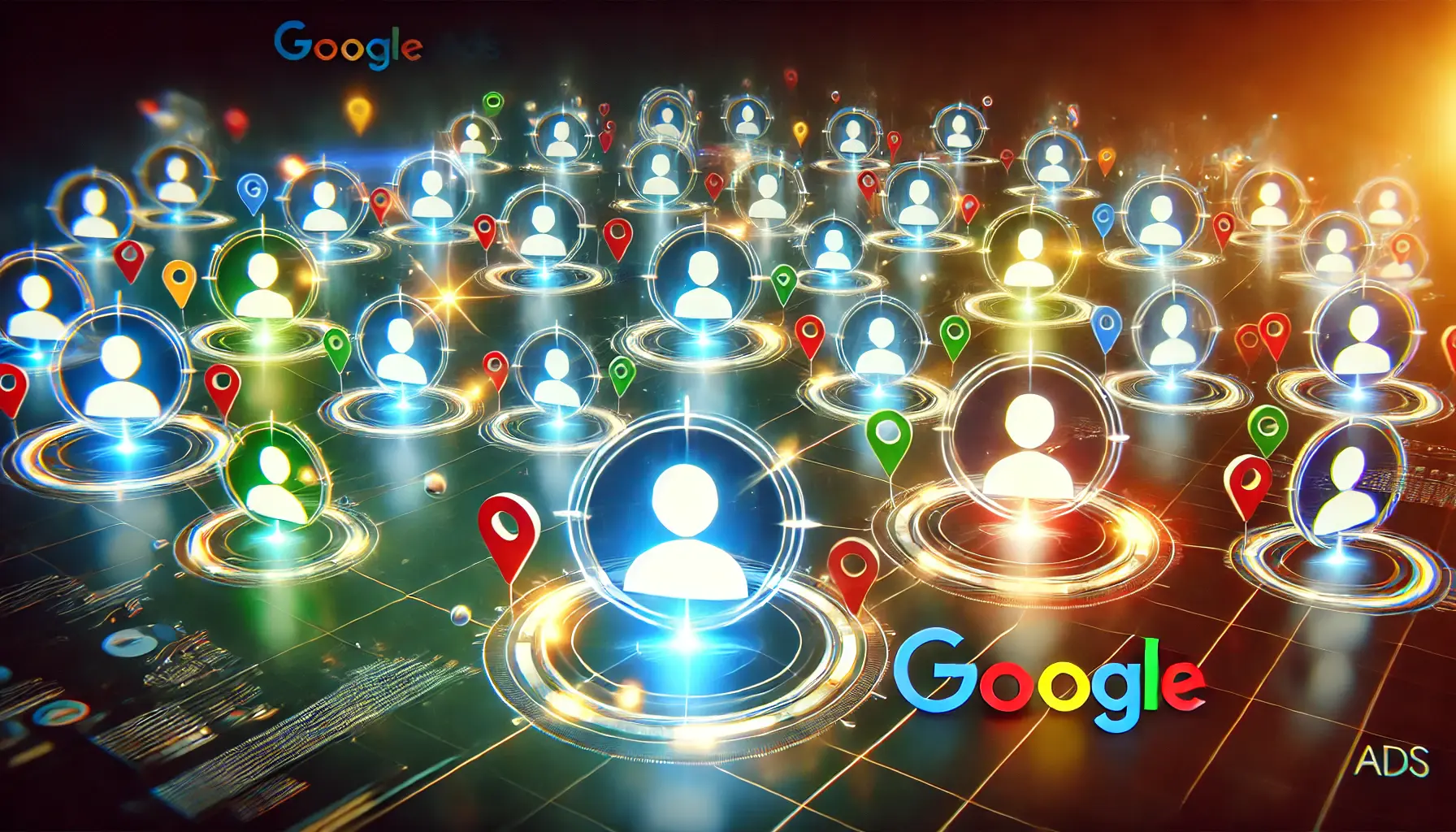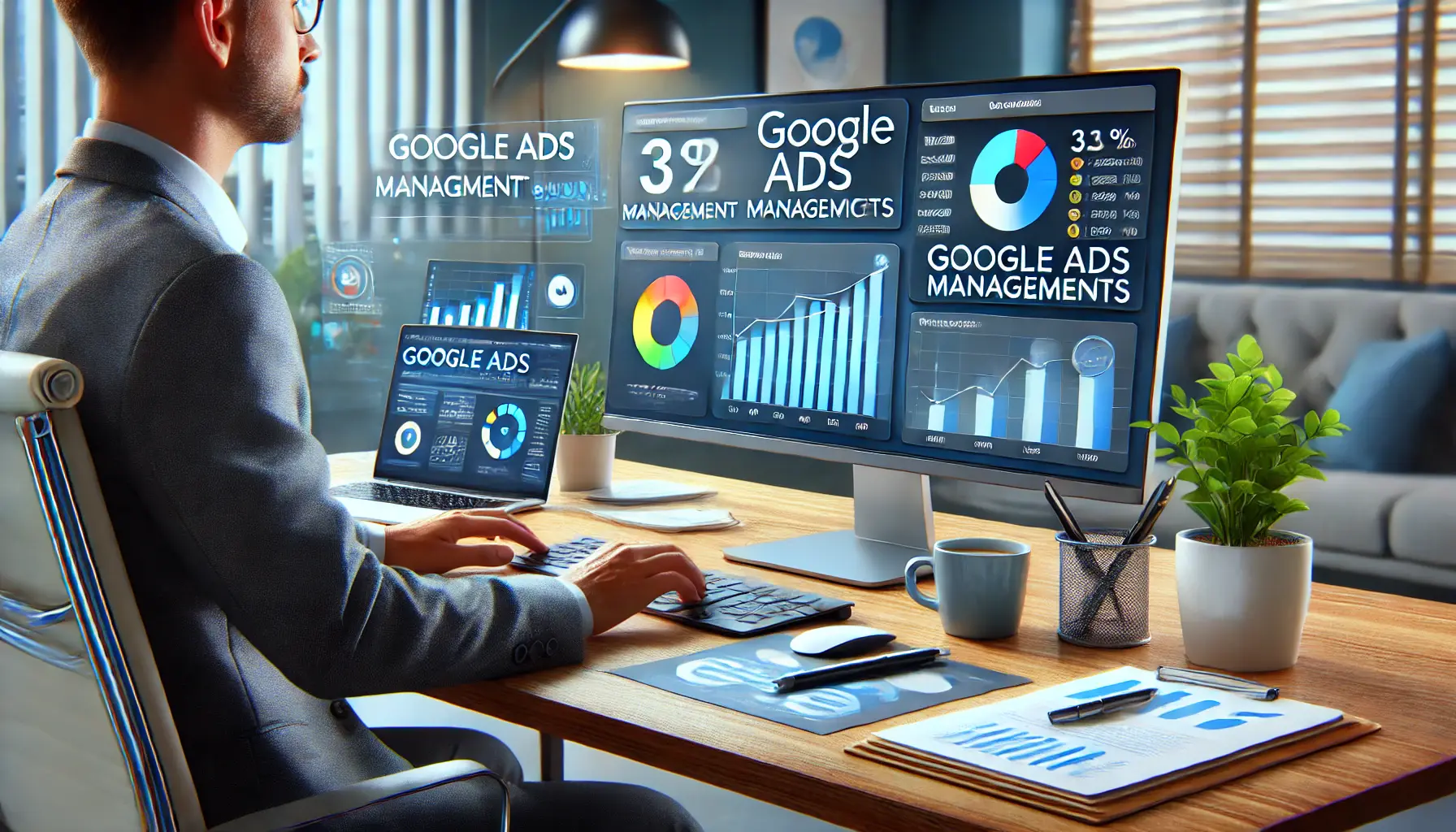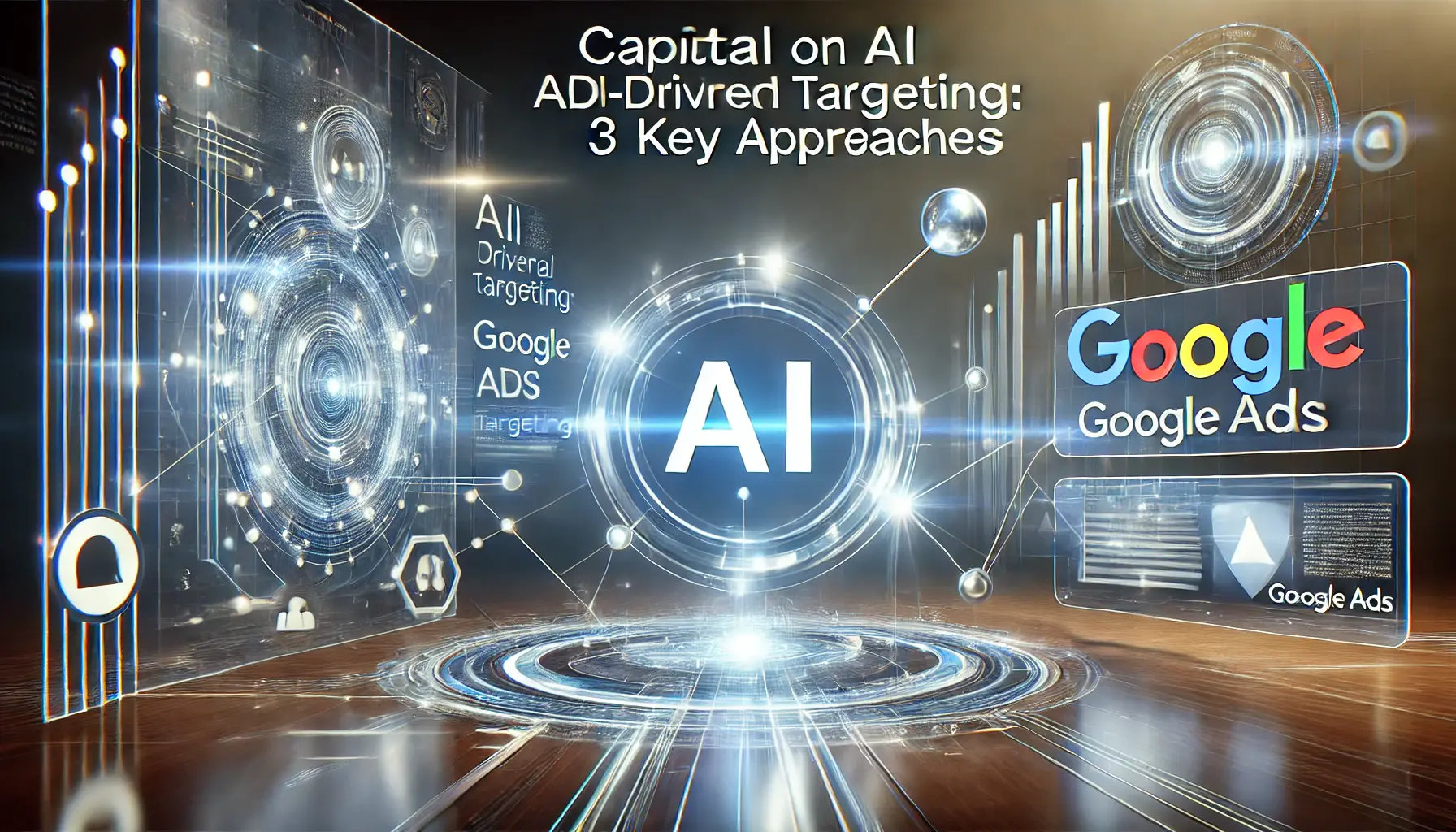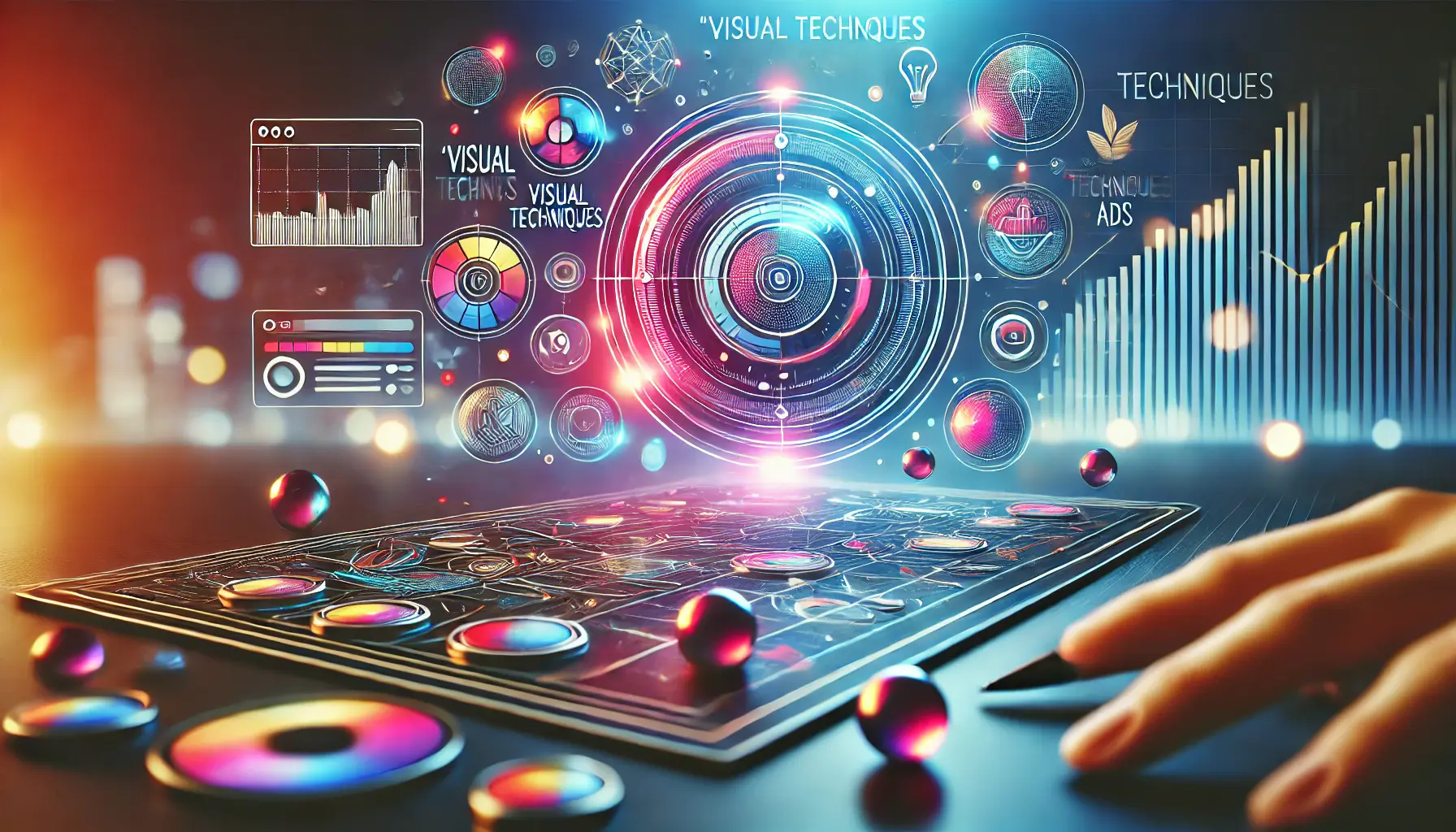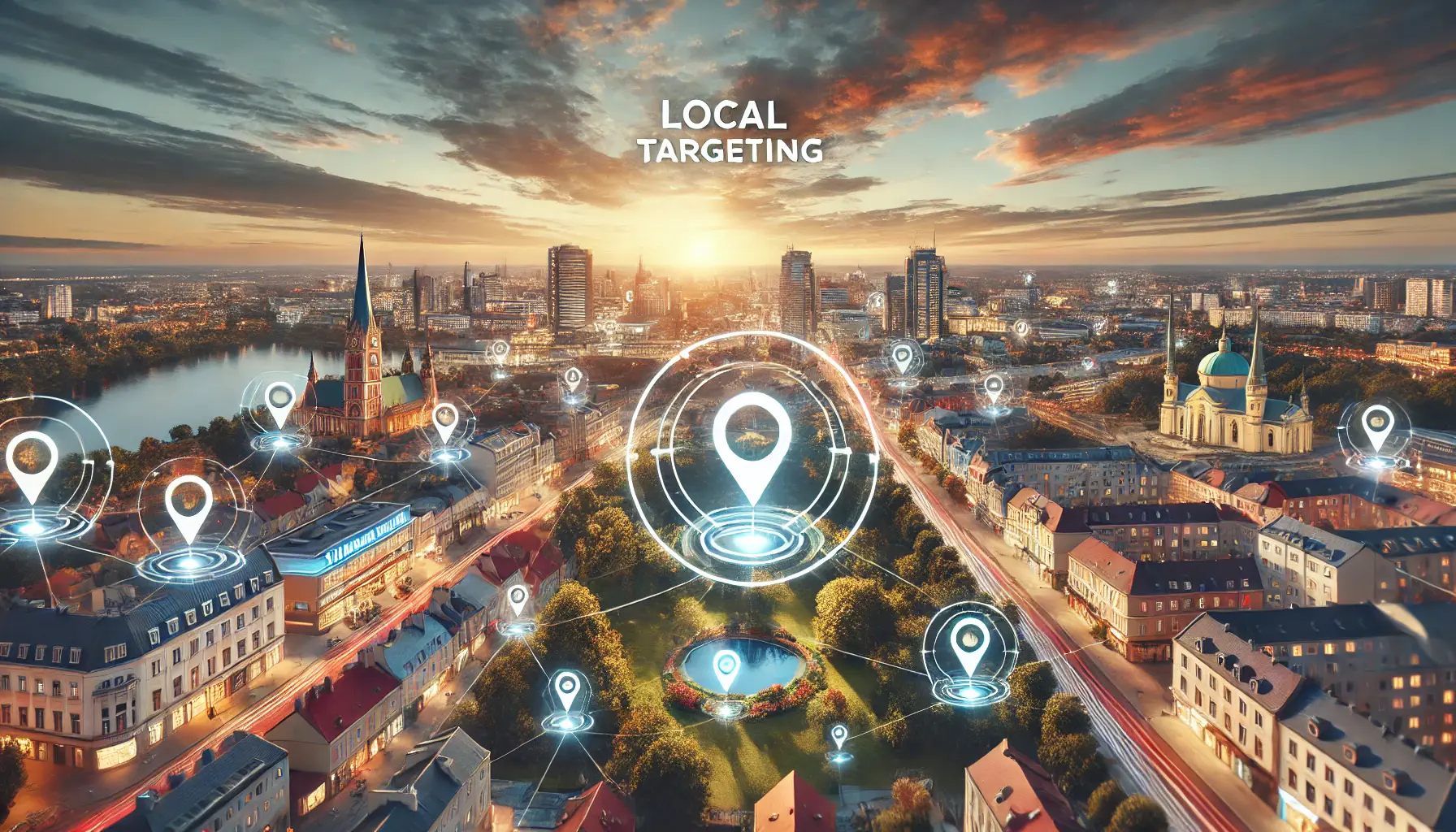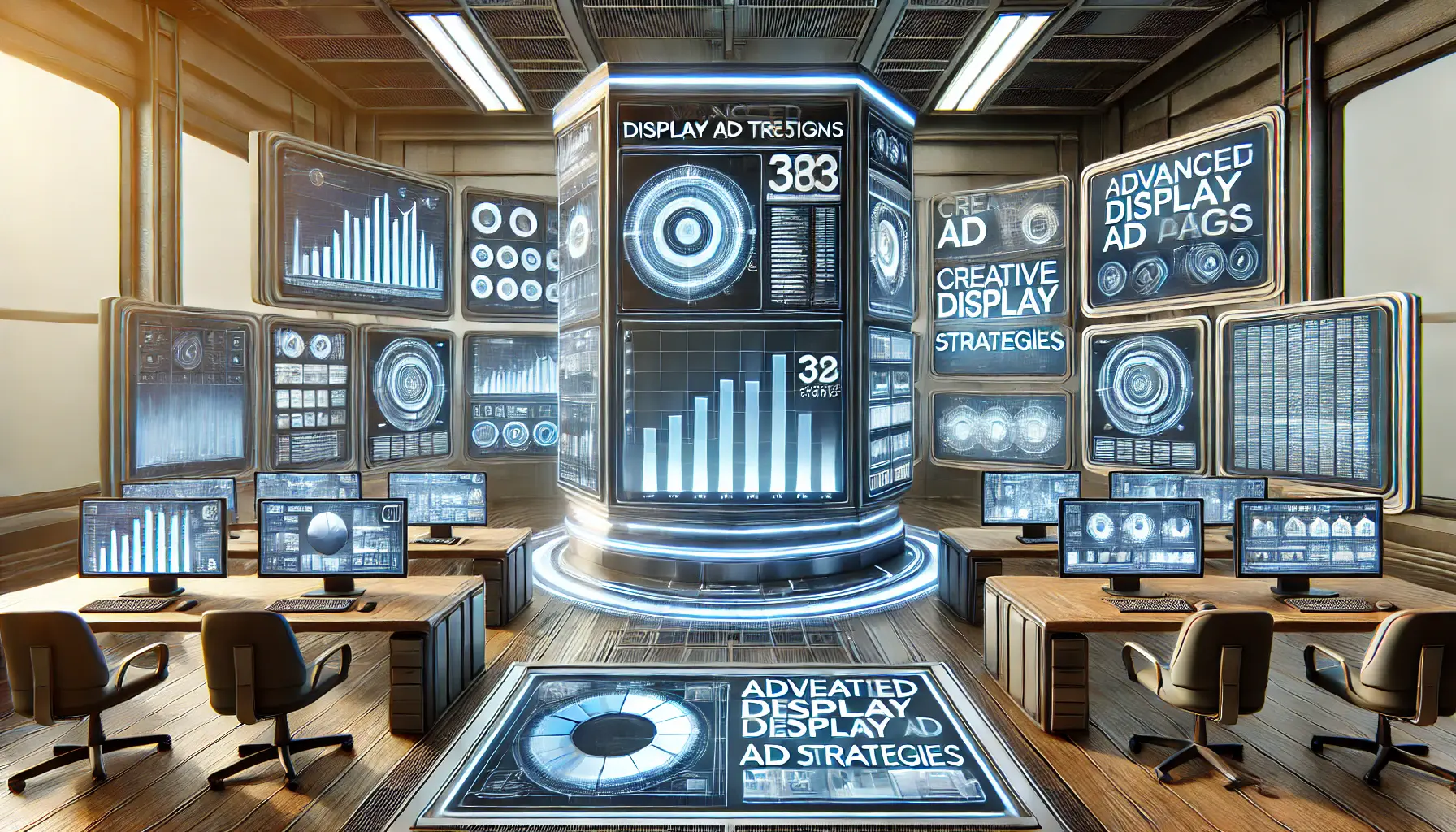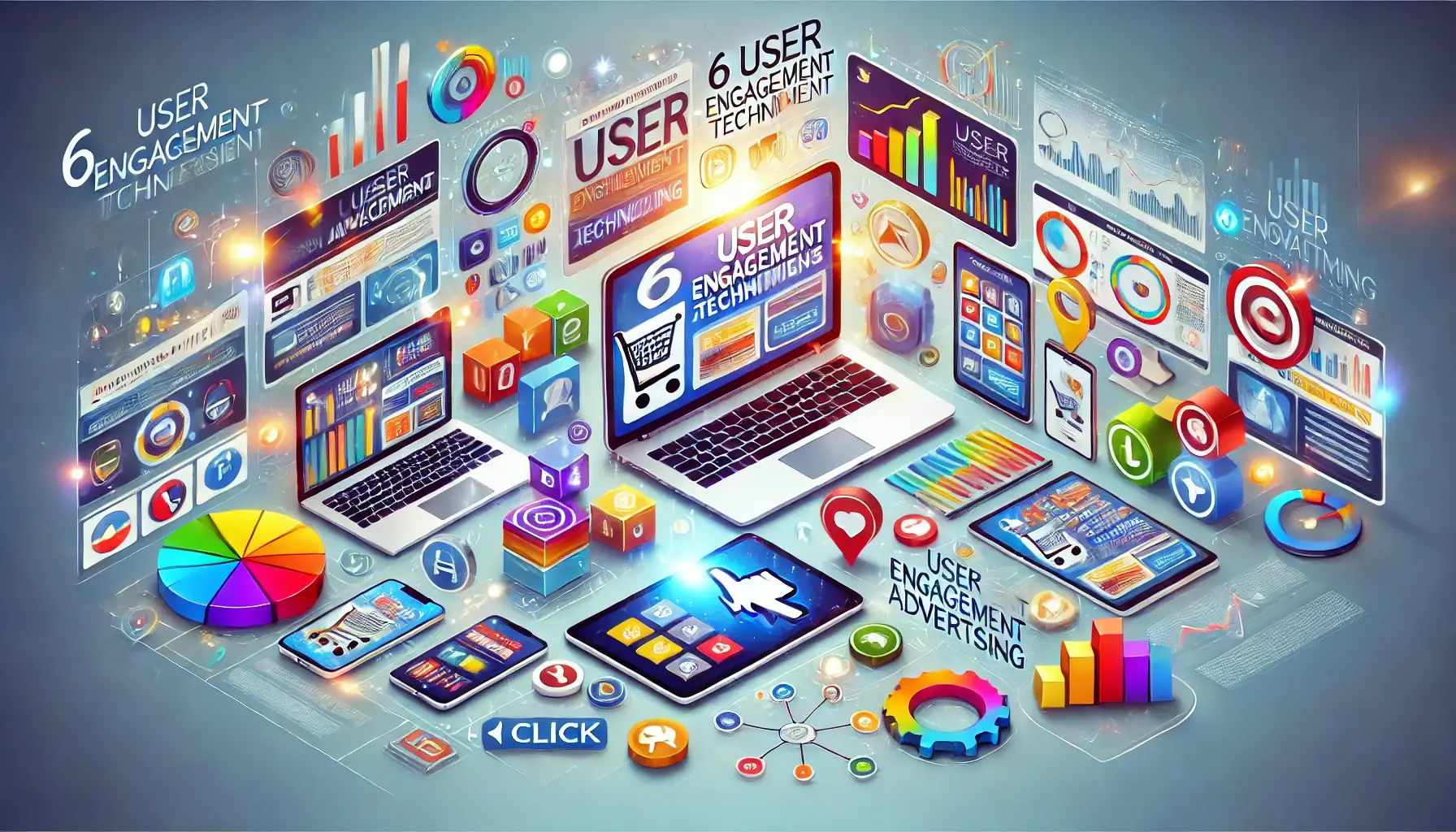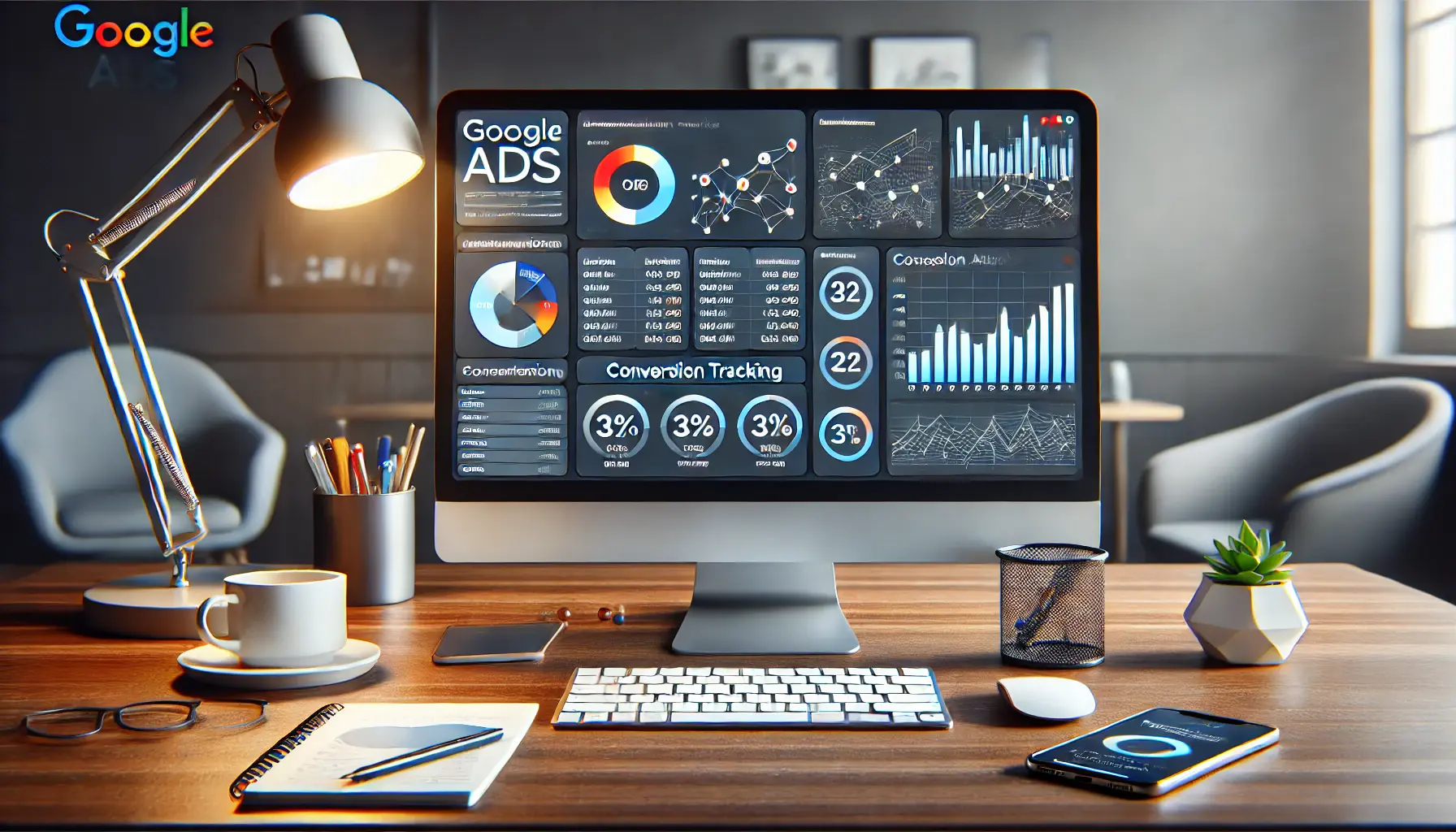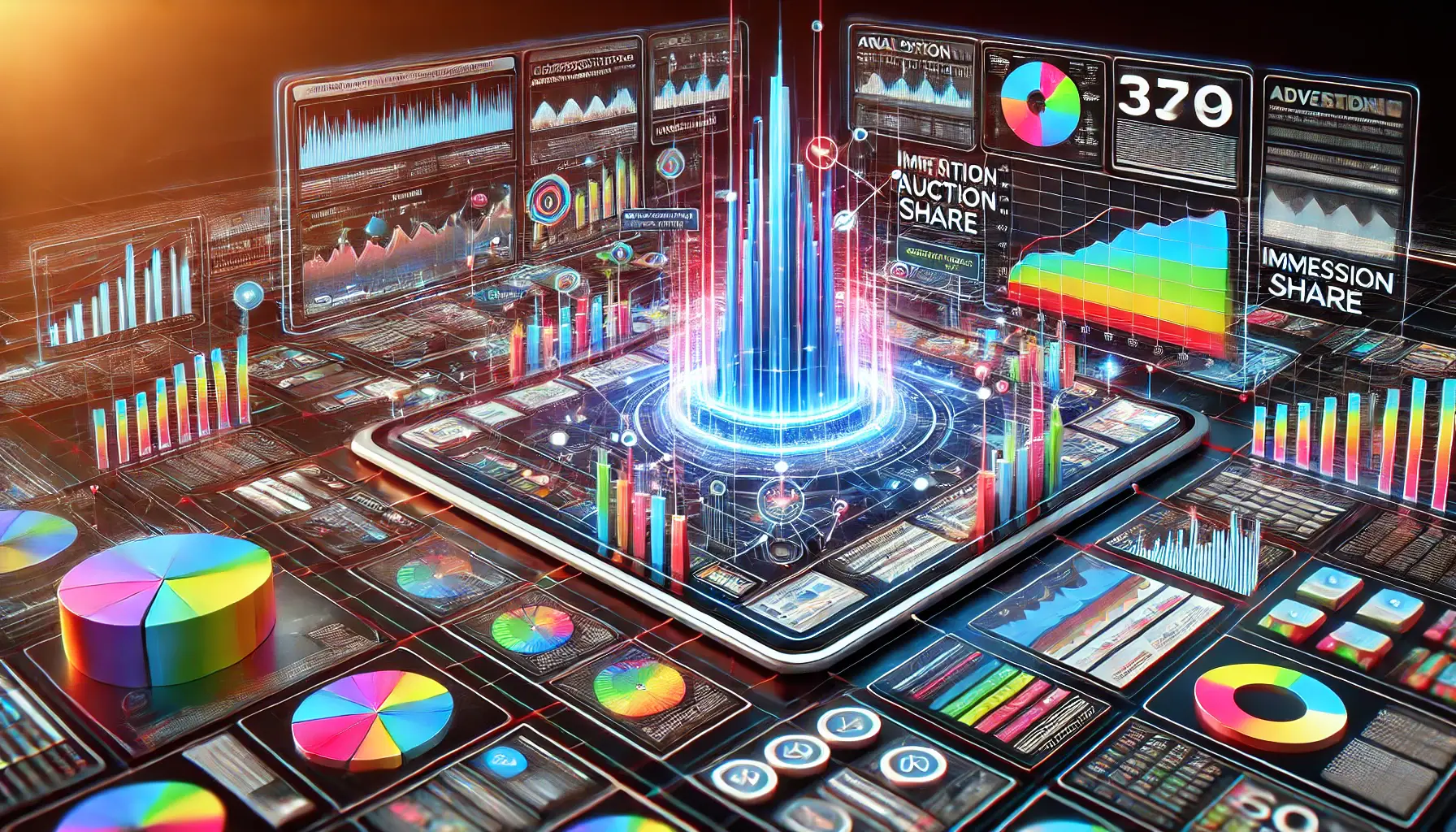In the modern digital arena, one of the most powerful tools at the marketer’s disposal is display advertisingA form of online advertising that uses visuals like banners, images, or videos to convey promotional messages..
However, as technology continues to evolve, so too do the ways in which we reach and resonate with our target audiences.
Enter AI-driven targeting techniques, representing a groundbreaking advancement that enables advertisers to create hyper-targetedHighly specific targeting focused on a particular audience segment with tailored messages. ads with an unprecedented level of precision and effectiveness.
Through artificial intelligence, advertisers can analyze data in real time to recognize patterns in consumer behavior and adjust campaigns to meet specific needs.
These techniques are not about reaching more people; it’s about reaching the right people at the right time with the right message.
In this article, we will discuss some of the most effective AI-driven targeting techniques to elevate your display ad campaigns.
Whether it’s refining your audience’s interests, understanding their online behaviors, or delivering deeply personalized content, this methodology expands the possibilities for your targeting strategies.
Let’s start by understanding what AI-driven targeting in display ads is and why it is crucial for your marketing success.
- Understanding AI-Driven Targeting in Display Ads
- Behavioral Targeting for Audience Precision
- Contextual Targeting to Achieve Relevance
- Predictive Targeting for Proactive Engagement
- Dynamic Creative Optimization for Personalized Display Ads
- Mastering Targeting in Display Ads: Key Takeaways
- Frequently Asked Questions About AI-Driven Targeting in Display Ads
Understanding AI-Driven Targeting in Display Ads
AI-driven targeting in display advertising has revolutionized the way marketers connect with their audiences.
Instead of relying solely on basic demographic data, AI deploys advanced algorithms to analyze vast amounts of data—from browsing behaviors to purchase history—providing insights that help create more precise and relevant ads.
This approach allows advertisers to connect with users who are more likely to engage, converting impressions into interactions and, ultimately, loyal customers.

Understanding AI-driven targeting in digital advertising.
What is AI-driven targeting?
AI-driven targeting leverages artificial intelligence to analyze data and identify the best audience for your display ads.
Using machine learningA branch of artificial intelligence that enables systems to learn from data and improve over time without being explicitly programmed. and predictive analyticsStatistical techniques that analyze historical data to predict future outcomes., AI detects patterns, learns from past interactions, and adapts over time.
This ensures that your ads appear to users who are most likely to be interested, making your campaigns both effective and efficient.

Exploring AI’s transformative role in modern advertising.
The role of AI in modern advertising
AI has become central to modern advertising strategies.
By processing massive volumes of data in seconds, AI enables advertisers to make quick, data-driven decisions—from selecting optimal ad placements to determining which products and messages resonate most with specific audiences.
With AI-driven targeting, advertisers can reach particular groups with content tailored to their tastes, significantly enhancing engagement.

Highlighting the benefits of AI in display ad targeting for better engagement and efficiency.
AI for Display Ad Targeting: Benefits
Leveraging AI in display ad targeting offers several compelling benefits:
- Better Relevance: AI analyzes user interests and behaviors to serve ads that align closely with individual preferences.
- High Efficiency: By focusing on the right audiences, AI reduces ad spend wastage and maximizes ROI.
- Real-time Adaptability: AI can adjust ad placements and creative content in real time to respond to changes in user behavior.
- Better Decision Making: With AI insights, marketers can optimize campaigns based on concrete data rather than speculation.
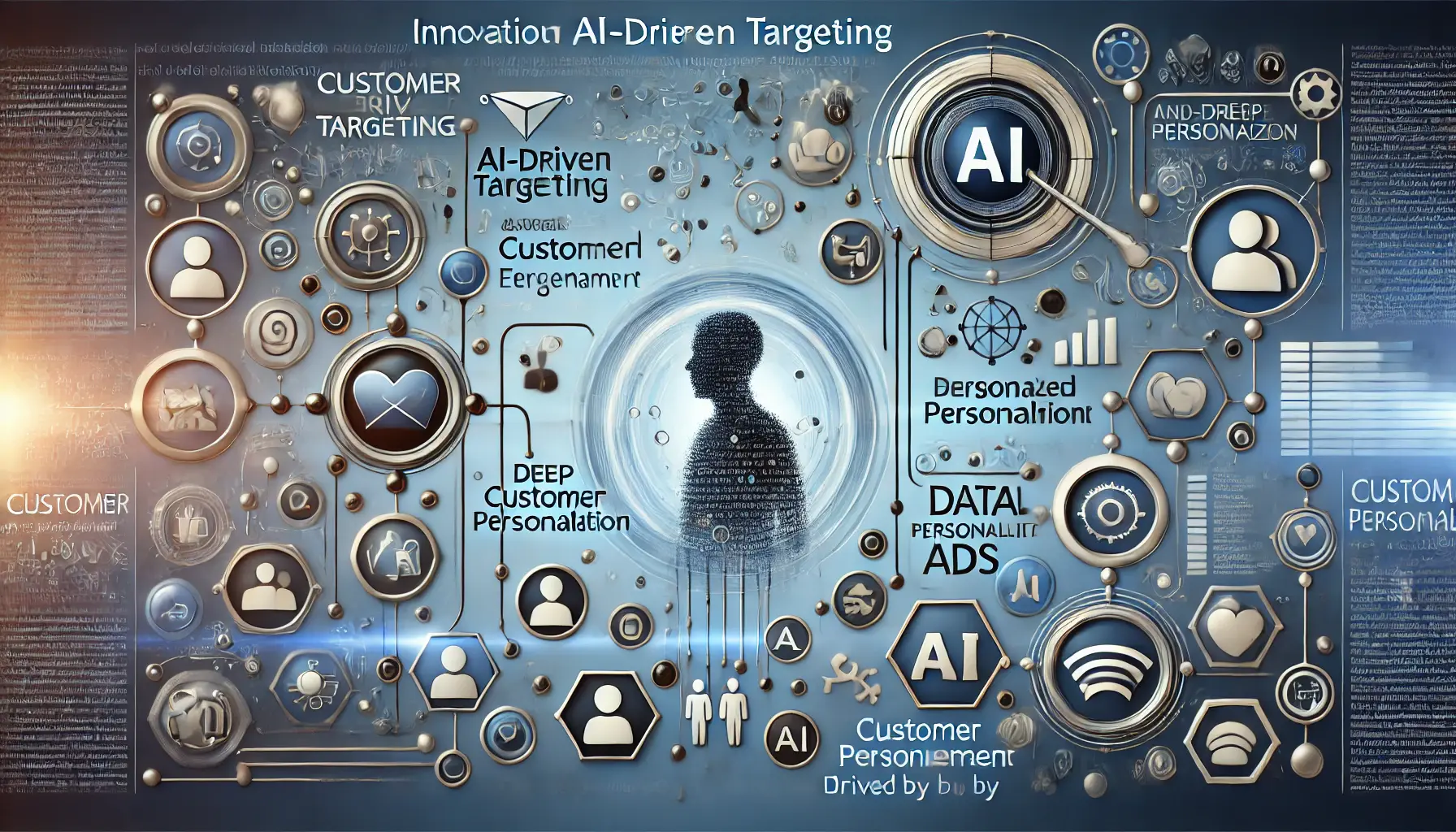
Exploring how AI-driven targeting enhances customer engagement through personalized experiences.
How AI-Driven Targeting Transforms Customer Engagement
AI-driven targeting not only enhances ad performance but also fundamentally changes how brands interact with their audiences.
By delivering relevant, personalized ads, AI improves the customer experience and builds stronger connections.
This approach turns one-time visitors into loyal customers by anticipating their needs, solving their problems, and delivering value through carefully crafted content.
AI-driven targeting provides the seamless and personalized ad experience that today’s consumers expect, leading to more meaningful engagement.
AI-driven targeting leverages data to connect with audiences more accurately, transforming impressions into meaningful engagements.
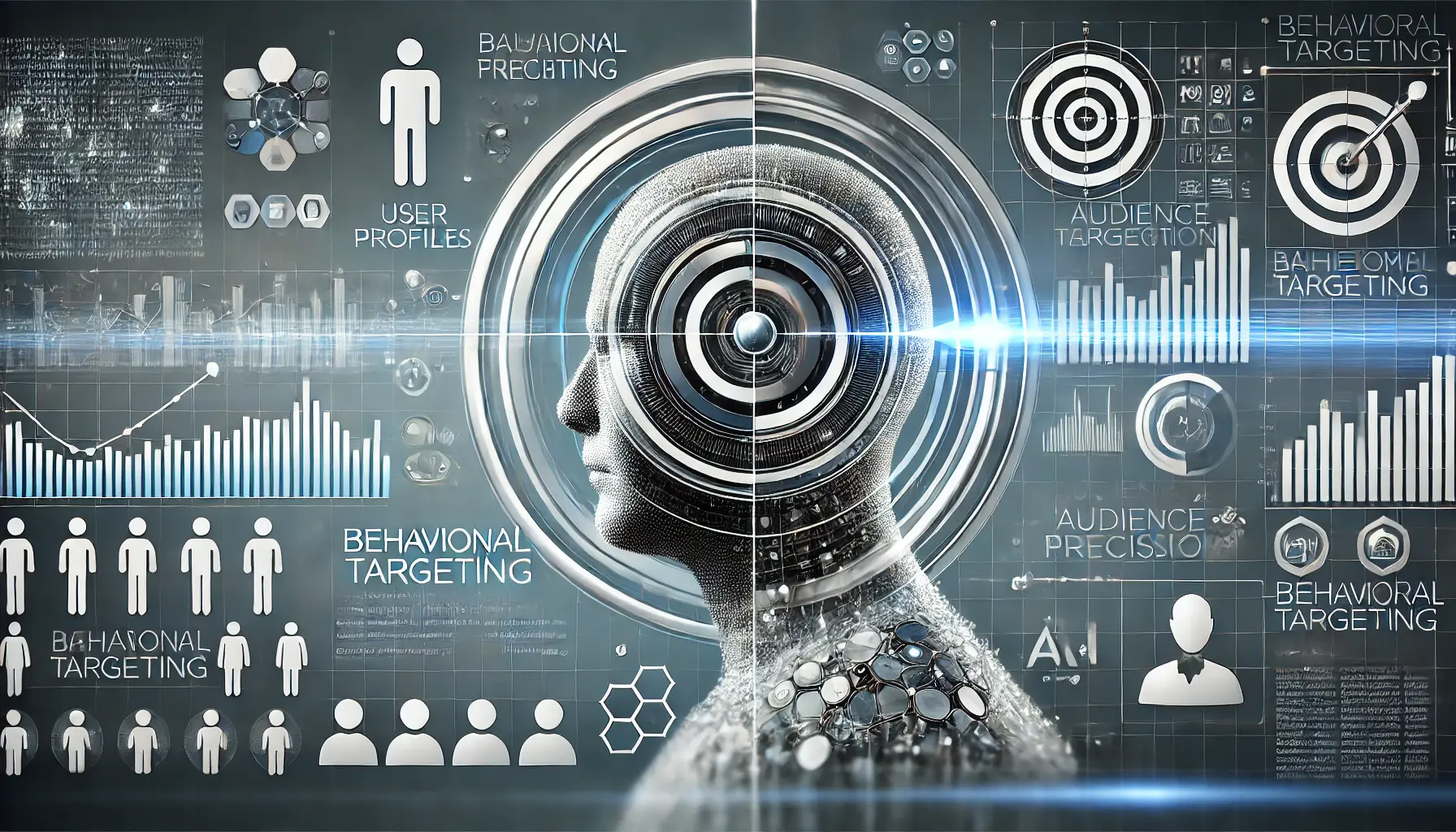
Understanding behavioral targeting for precision in audience engagement.
Behavioral Targeting for Audience Precision
Among all the proficient AI-driven targeting techniques in display advertising, behavioral targeting consistently leads the way.
It takes into consideration the user’s online behavior, including website visits, browsing patterns, and previous interactions with ads, to serve ads that deeply resonate with individual preferences.
For marketers, it’s all about creating an experience that best connects with each individual member of the audience.
When AI is added to the mix, behavioral targeting becomes even more powerful, providing real-time insights and dynamically adjusting ads to reach audiences when they are most open to a brand’s message.
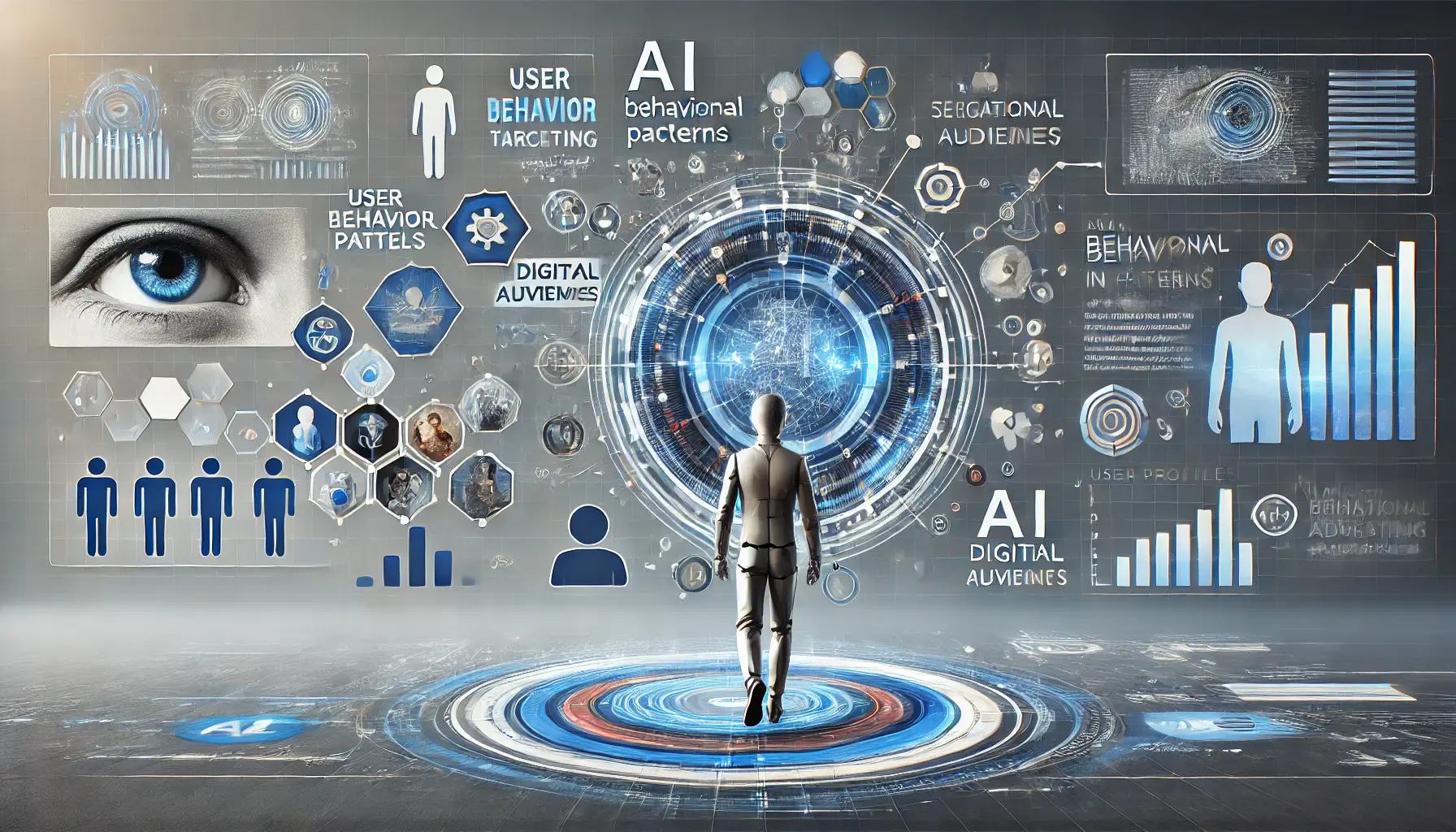
Examining how AI leverages behavioral data for targeted advertising.
How AI uses behavioral data in targeting
AI-powered targeting uses algorithms that tap into various types of data, such as social media activity, online shopping history, and browsing behavior.
The information extracted from this data is used to create profiles based on users’ interests, habits, and behaviors.
For example, if a user regularly visits fashion websites, AI algorithms might classify that consumer as a potential customer for apparel brands.
This insight allows advertisers to create display ads in tune with the users’ behaviors and preferences, driving higher engagement rates.
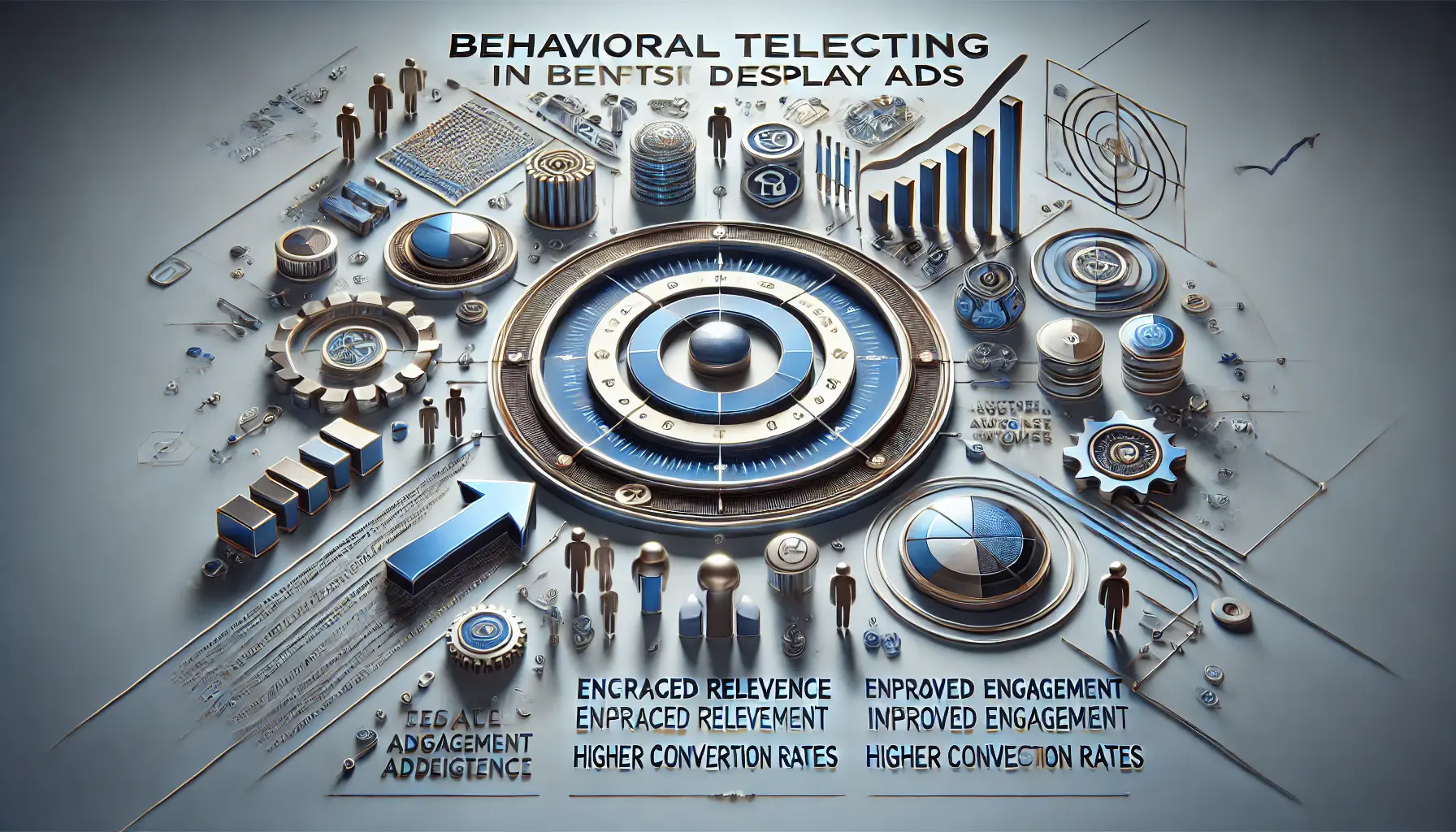
Highlighting the benefits of behavioral targeting for display ads.
Benefits of Behavioral Targeting in Display Ads
Behavioral targeting offers several advantages that make display ads more effective and efficient:
- Increased Relevance: Targeting based on users’ behavior allows advertisers to show content that better aligns with each specific user’s interests.
- Improved Conversion Rates: Behavioral targeting focuses on users who have already shown interest in similar products, leading to higher conversion rates.
- Enhanced User Experience: Users appreciate ads that are relevant and helpful, which improves their overall browsing experience.
- Better ROI: By targeting audiences most likely to convert, behavioral targeting reduces wasted ad spend and maximizes returns.

Examples of effective behavioral targeting in digital advertising.
Examples of Effective Behavioral Targeting
Successful behavioral targeting campaigns often use real-time data to enhance relevance.
For example, a retailer might retarget users who abandoned their shopping carts by displaying ads with a discount or special offer on those products.
Alternatively, a streaming service might run ads for a new series based on a user’s past viewing preferences, increasing the likelihood of engagement.

Illustrating the process of implementing behavioral targeting in advertising campaigns.
Implementing Behavioral Targeting in Your Campaigns
To implement behavioral targeting effectively, begin by defining audience segments based on key behavioral indicators.
Use AI-based tools to aggregate customer data from various touchpointsInteractions or points of contact between a business and its customers throughout the customer journey., including social media, search engines, and website interactions.
Platforms like Google Ads offer robust tools for creating custom segments, allowing advertisers to build campaigns based on specific actions.
Regularly reviewing and updating your segments ensures your ads remain relevant and continue to resonate with your target audience.
Behavioral targeting uses online behavior insights to create highly relevant ads, connecting with user preferences dynamically.

Exploring contextual targeting to place ads in relevant environments.
Contextual Targeting to Achieve Relevance
Contextual targeting in display advertising is a powerful AI-driven technique that focuses on placing ads within matching content.
In contextual targeting, AI analyzes the context of a web page, including keywords, topics, and content structure, to ensure that ads appear in relevant environments.
This helps increase ad relevance and resonance, making users more likely to engage with ads related to the content they are already interested in.
For example, an advertisement for sportswear on a fitness blog will naturally appeal to readers of that blog, increasing the ad’s impact.
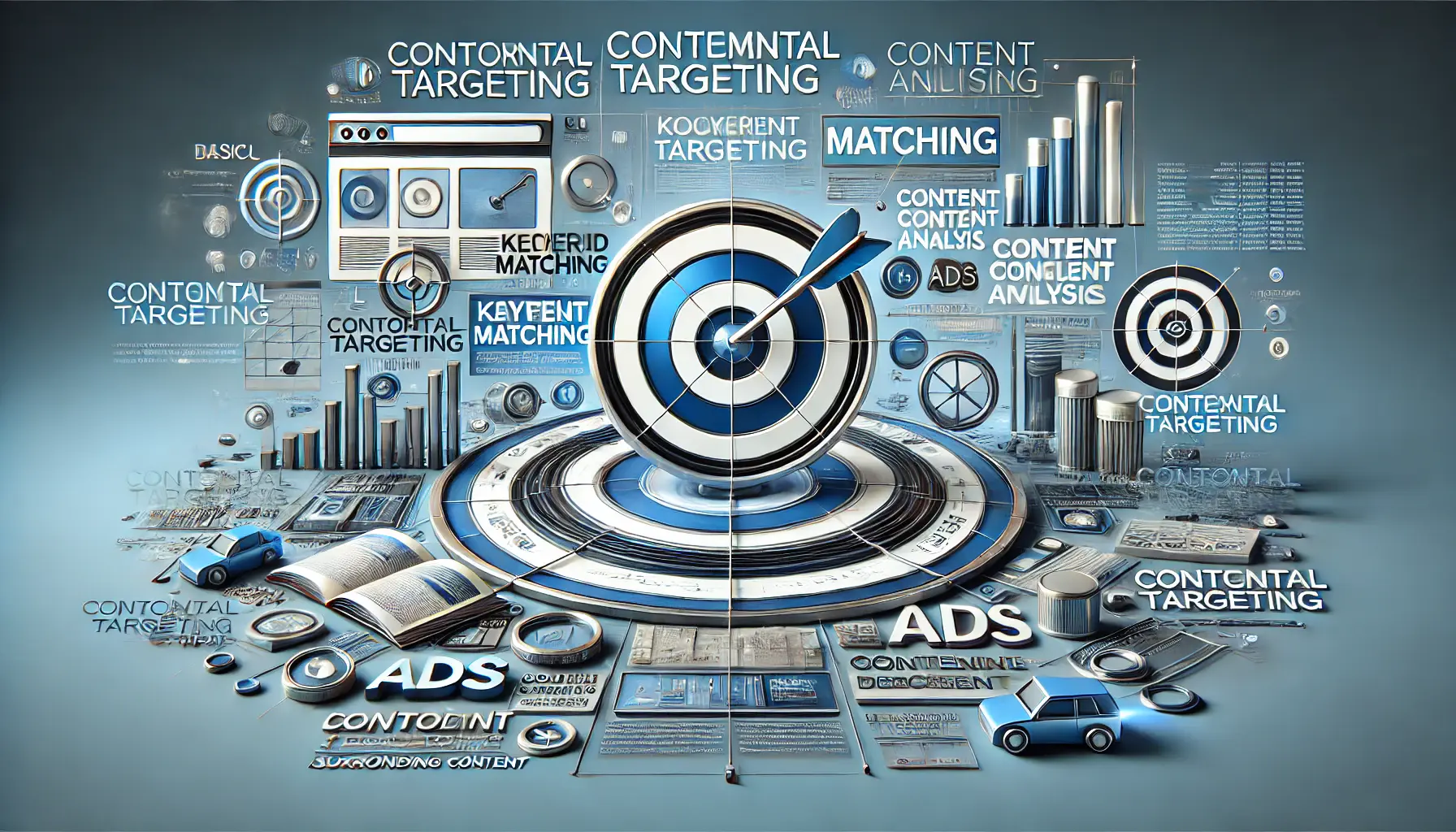
Understanding the basics of contextual targeting in digital advertising.
The Basics of Contextual Targeting
With contextual targeting, AI algorithms analyze the content of a webpage in real time, focusing on keywords, page themes, and other contextual indicators.
Unlike behavioral targeting, which relies on user data, contextual targeting relies exclusively on the environment in which the ad appears.
This approach enables advertisers to reach audiences who are already engaged with related content, making the ad feel like a natural extension of the page rather than an interruption.
This also aligns with privacy regulations, as it focuses on context rather than personal data, making it a popular option in privacy-sensitive regions.

Illustrating how AI enhances ad context for more relevant and effective placements.
Using AI to Enhance Ad Context
Contextual targeting has evolved from simple keyword lists to a programmaticAutomated buying and selling of digital ad space using software and algorithms. powerhouse, thanks to AI.
Advanced machine learning models now identify and interpret page context with remarkable accuracy, ensuring ads are placed in the most relevant settings.
For instance, AI can differentiate between whether the word “apple” refers to the tech brand or the fruit, based on surrounding content.
This precision enhances the relevance of display ads, leading to higher click-through rates and fewer irrelevant placements.
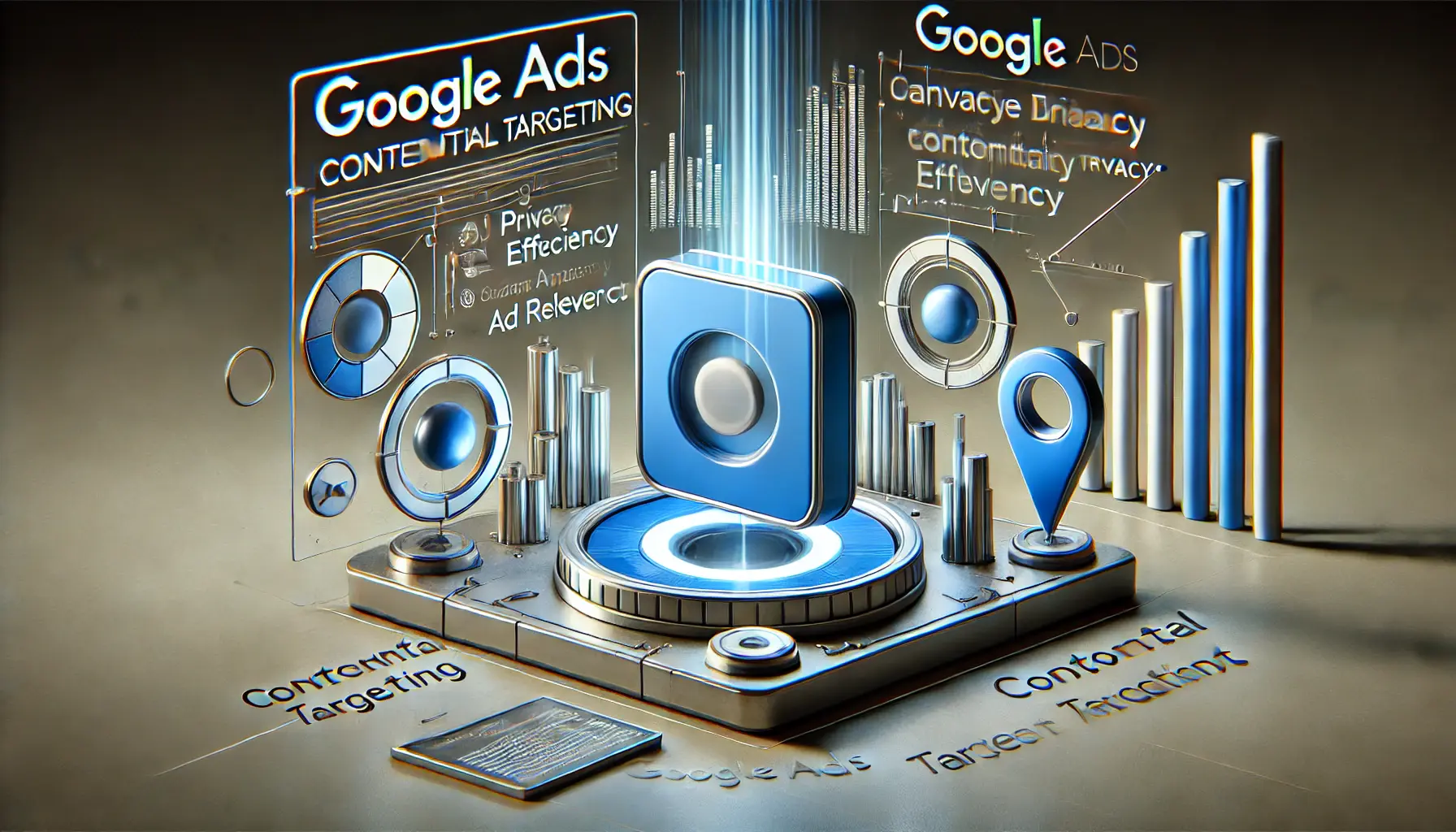
Illustrating the advantages of contextual targeting in Google Ads for enhanced ad relevance and efficiency.
Advantages of Contextual Targeting in Google Ads
Contextual targeting offers several significant advantages for display advertising on platforms like Google Ads:
- Privacy-Friendly: Contextual targeting does not require user data, allowing advertisers to stay compliant with privacy laws and address user concerns about data usage.
- Greater Relevance: Ads appear alongside content that reflects their theme, making it more likely for ads to reach interested users.
- Cost-Effective: With higher relevance, contextual targeting can achieve greater engagement and returns without extensive use of user data.
- Increased Brand Safety: By analyzing content before serving ads, contextual targeting minimizes the risk of ad placements in inappropriate contexts, protecting brand reputation.

Illustrating real-life examples of contextual targeting success in digital advertising.
Real-Life Examples of Contextual Targeting Success
Many brands have succeeded with contextual targeting by aligning their ads with relevant content.
For example, a skincare company advertised on beauty and wellness blogs, capturing the attention of readers already interested in these topics.
Similarly, a travel agency placed ads on travel guide websites, engaging users actively seeking travel advice.
These examples highlight how contextual targeting enables brands to reach audiences organically, leading to better click-through rates and conversions by targeting users who are already engaged with the topic.
Contextual targeting places ads in relevant environments based on web page content, enhancing engagement without personal data.

Illustrating predictive targeting for proactive engagement in digital advertising.
Predictive Targeting for Proactive Engagement
Predictive targeting is a process that anticipates the behaviors and preferences users are most likely to exhibit in the future.
In display advertising, this cutting-edge, AI-driven technique analyzes historical data to identify patterns and forecast user actions.
This approach helps advertisers deliver ads to users who are most likely to engage or convert, allowing marketers to stay ahead of consumption trends and ensuring that display ads reach the right audience at the right time, ultimately boosting engagement and conversion ratesThe percentage of users who complete a desired action, like a purchase, after engaging with an ad..
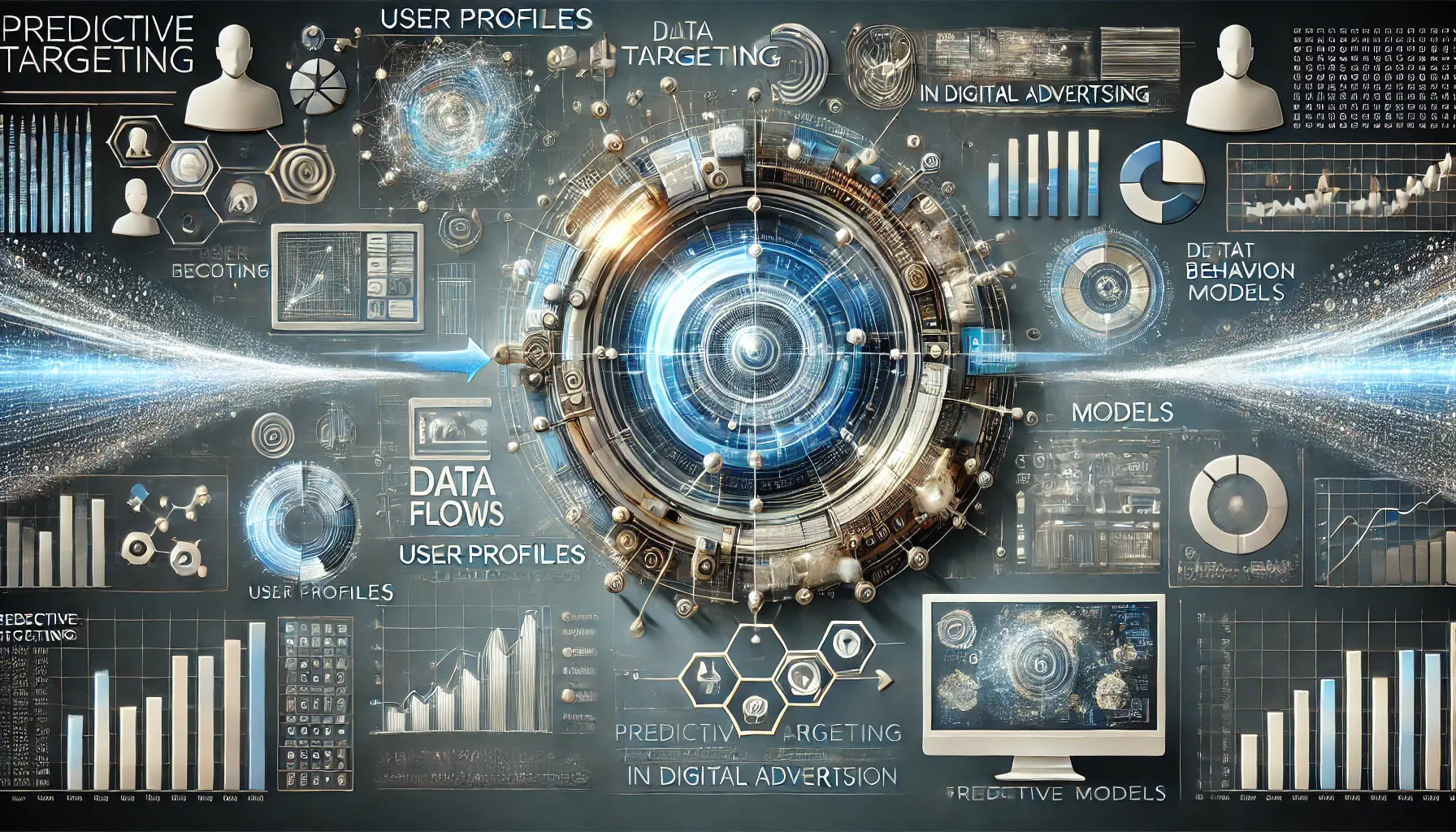
Illustrating the process of how predictive targeting works in digital advertising.
How Predictive Targeting Works
Predictive targeting utilizes machine learning algorithms to process large volumes of data, including user demographics, browsing history, purchase behavior, and engagement metrics.
From this data, AI models identify correlations and trends, predicting future actions, such as the likelihood that a user will click on an ad or make a purchase.
This foresight enables advertisers to design display ads that align with projected user interests and behaviors, increasing the likelihood of successful engagement.
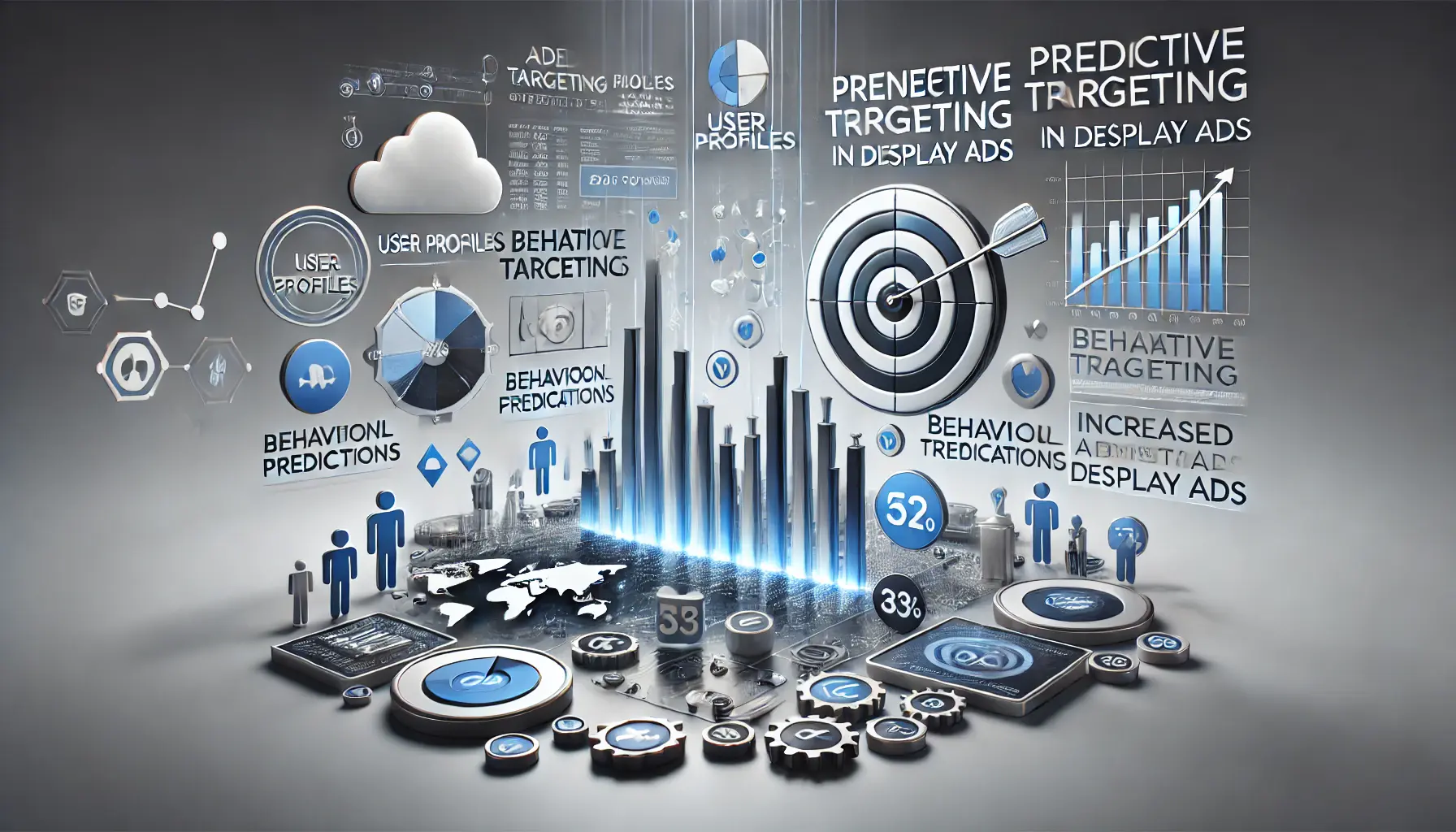
Illustrating the benefits of predictive targeting in display ads for enhanced engagement and conversion rates.
Benefits of Predictive Targeting in Display Ads
Predictive targeting provides several key benefits for display advertising, including:
- Enhanced Precision: Predictive targeting forecasts user behavior, allowing for more accurate audience segmentation and delivering ads to users who are most likely to engage.
- Improved ROI: By targeting users with a high propensity to convert, predictive targeting enables more efficient ad spending, maximizing return on investment.
- Personalized User Experience: Ads tailored to forecasted user preferences create a more personal experience, strengthening brand engagement.
- Competitive Advantage: Anticipating consumer trends helps brands stay ahead of competitors by proactively meeting customer needs.
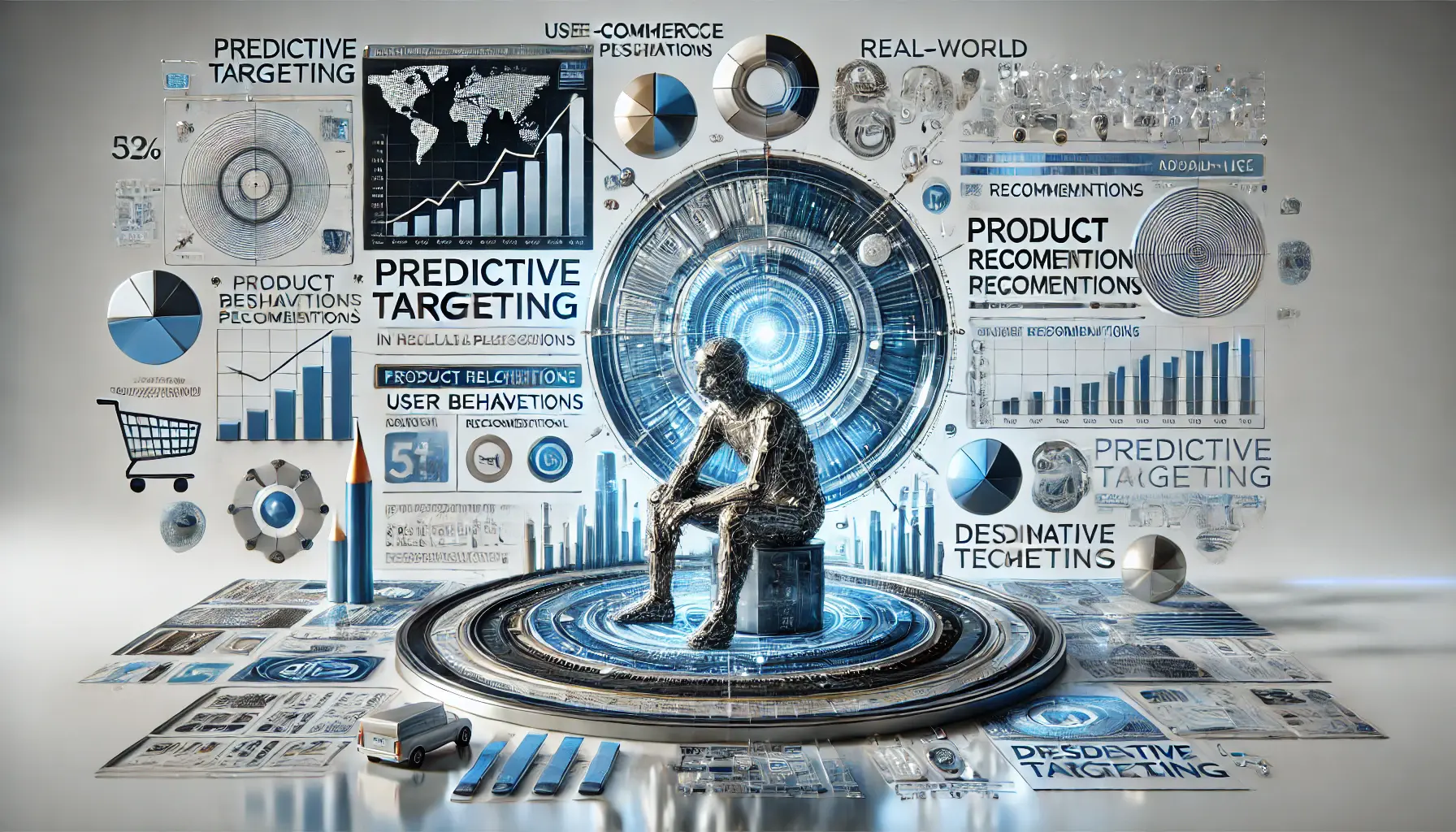
Illustrating real-world applications of predictive targeting in e-commerce, streaming, and digital advertising.
Real-World Applications of Predictive Targeting
Many companies successfully implement predictive targeting to enhance their display advertising.
For instance, e-commerce websites analyze user browsing and purchase histories to predict future buying intentions, showing ads for products likely to interest specific users.
Similarly, streaming services use predictive targeting to recommend movies or shows based on user viewing history, increasing user satisfaction and engagement.

Illustrating the process of implementing predictive targeting in digital advertising campaigns for optimized strategies.
Implementing Predictive Targeting in Your Campaigns
To make your display ad campaigns predictive, consider the following steps:
- Data Collection: Gather a broad set of user interaction data, including website visits, purchase history, and engagement metrics.
- Data Analysis: Leverage AI and machine learning tools to analyze this data, identifying patterns and trends that inform predictive models.
- Model Development: Develop predictive models based on analyzed data to forecast user behaviors and preferences.
- Ad Personalization: Use insights from predictive models to create personalized display ads that align with predicted user interests.
- Continuous Optimization: Regularly update predictive models and ad strategies to maintain their effectiveness.
Predictive targeting empowers advertisers to proactively engage their audience by delivering display ads that meet anticipated user needs and preferences, increasing engagement and conversion rates.
Predictive targeting forecasts future user behaviors, allowing proactive audience engagement and optimized ad impact.

Illustrating dynamic creative optimization for personalized display ads in real-time.
Dynamic Creative Optimization for Personalized Display Ads
Dynamic Creative Optimization, or DCO, stands out as one of the advanced AI-driven targeting methods in display advertising.
It creates customized ad content in real-time to align with users’ individual preferences and behaviors.
Equipped with data on browsing history, location, and past interactions, DCO enables advertisers to create highly relevant and engaging ads, leading to better user experiences and higher conversion rates.
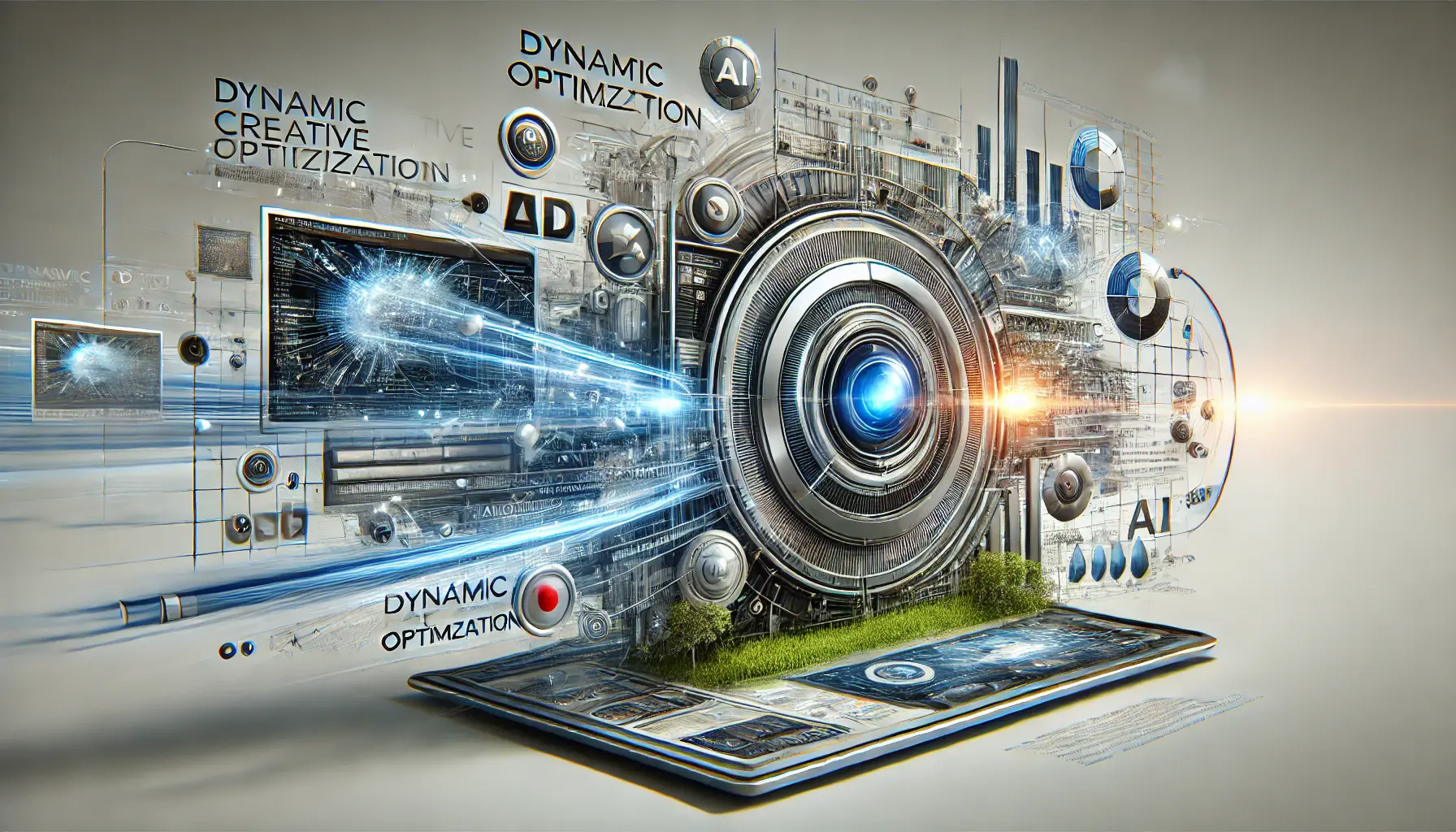
Illustrating the concept of dynamic creative optimization in digital advertising.
Understanding Dynamic Creative Optimization
DCO utilizes AI algorithms to compile various ad components—such as images, text, and calls-to-action—in real-time.
This approach ensures that each user sees an ad tailored to their unique interests and needs.
For example, an e-retailer can use DCO to display items a user has previously viewed or suggest similar products the user might find interesting, thus enhancing engagement.

Illustrating the benefits of Dynamic Creative Optimization (DCO) in display advertising for personalized, data-driven ad content.
Benefits of DCO in Display Advertising
The primary benefits of DCO in display advertising include:
- Enhanced Personalization: Ads are customized based on individual user profiles, making them more relevant and appealing.
- Improved Engagement: User-level personalization increases the likelihood of capturing users’ attention and improving click-through rates.
- Increased Conversion Rates: Relevant ad content encourages users to take desired actions, whether it’s making a purchase or signing up for a service.
- Efficient Ad Management: DCO automates ad creatives, saving time and resources without sacrificing consistency across campaigns.

Illustrating real-world applications of Dynamic Creative Optimization (DCO) across various platforms.
Real-World Applications of DCO
DCO has become a popular tool among brands to enhance display advertising.
For example, a travel company can use DCO to display personalized vacation packages based on the destinations users have previously searched or booked.
Similarly, fashion retailers can showcase clothing items that match the categories a user has browsed or purchased before, increasing the likelihood of conversion.
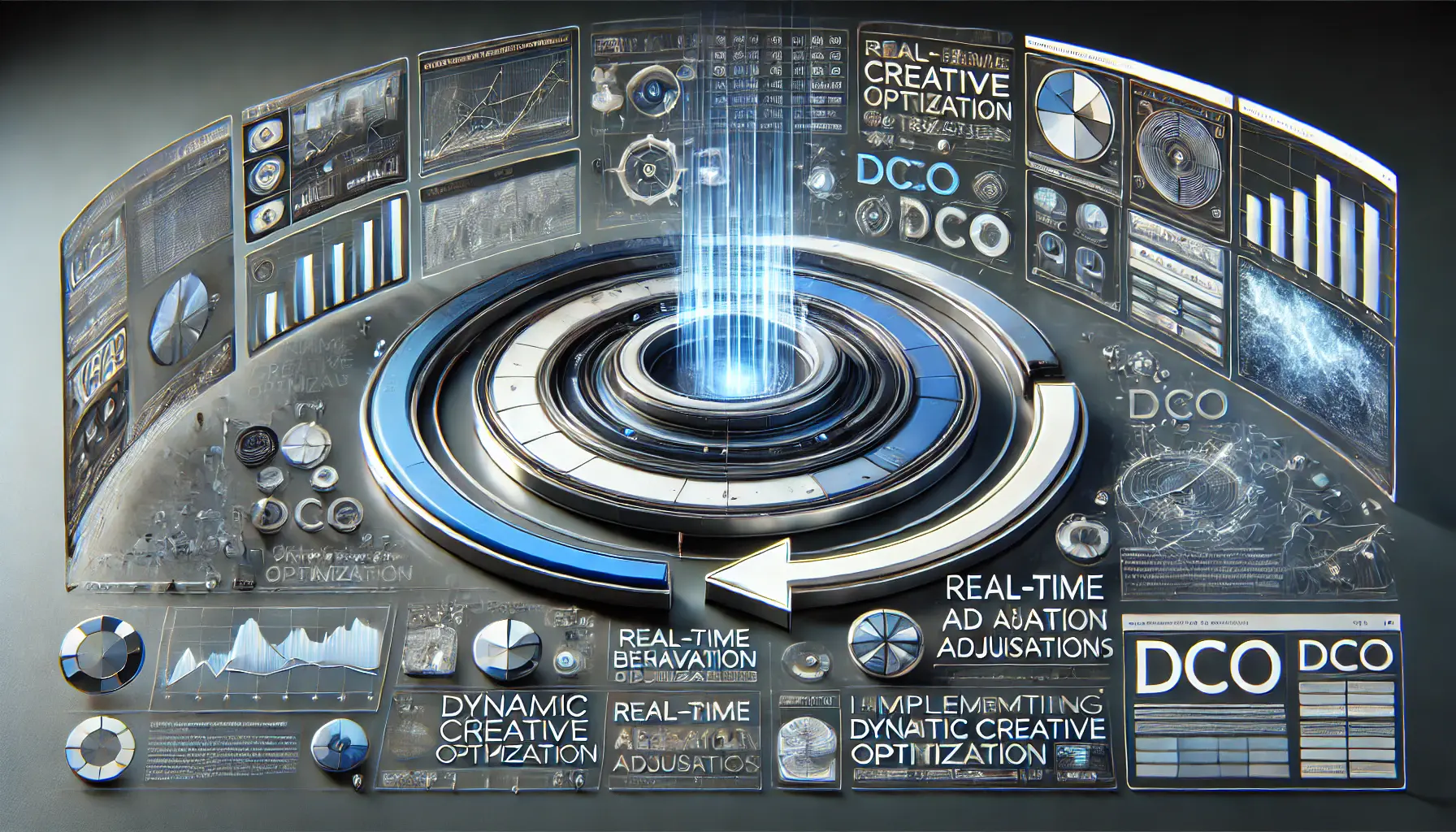
Illustrating the process of implementing Dynamic Creative Optimization (DCO) in digital advertising campaigns.
Implementing DCO in Your Campaigns
To incorporate DCO into your display ad campaigns, consider these key steps:
- Data Acquisition: Collect comprehensive user information, including demographics, browsing behavior, and purchase history.
- Creative Asset Creation: Develop multiple versions of ad elements, such as images, headlines, and calls-to-action, that can be dynamically combined.
- AI Integration: Utilize AI-based DCO platforms to automate the assembly and delivery of personalized ads.
- Continuous Optimization: Monitor ad performance and refine DCO strategies using real-time data and insights.
Utilizing Dynamic Creative Optimization enables advertisers to deliver personalized display ads that resonate with individual users, driving higher engagement and conversion rates.
DCO uses AI to create real-time personalized ads, making ads more relevant and increasing conversions.
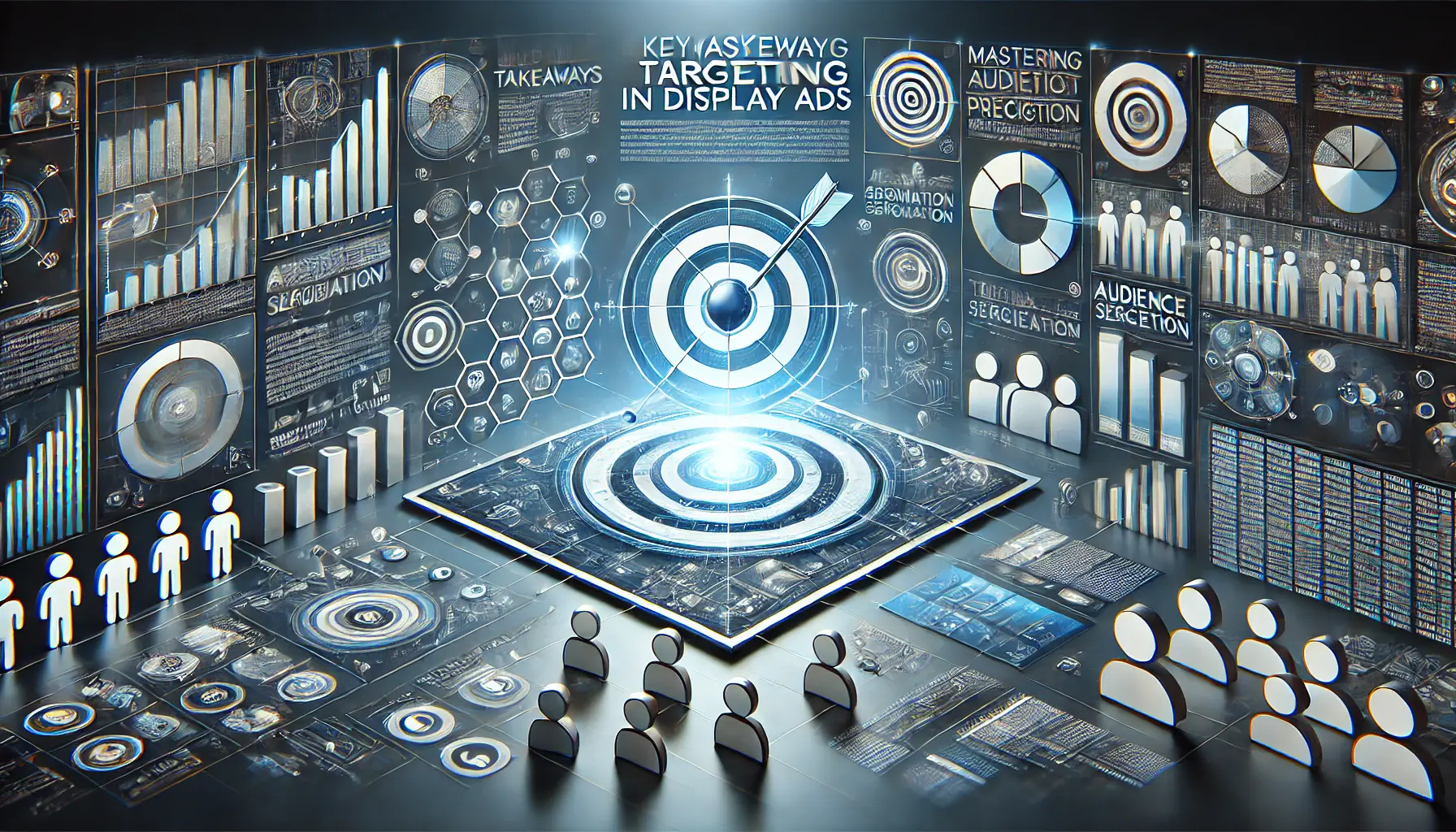
Illustrating the key takeaways of mastering targeting in display ads for precision and effectiveness.
Mastering Targeting in Display Ads: Key Takeaways
In today’s competitive digital advertising landscape, AI-driven targeting in display ads has become essential for engaging audiences with greater relevance and precision.
These techniques have transformed how brands communicate with users by reaching the right audience with the right message at the optimal time.
From boosting engagement and conversion rates to offering valuable insights that help advertisers stay ahead in a dynamic market, AI-powered targeting is redefining success in display advertising.
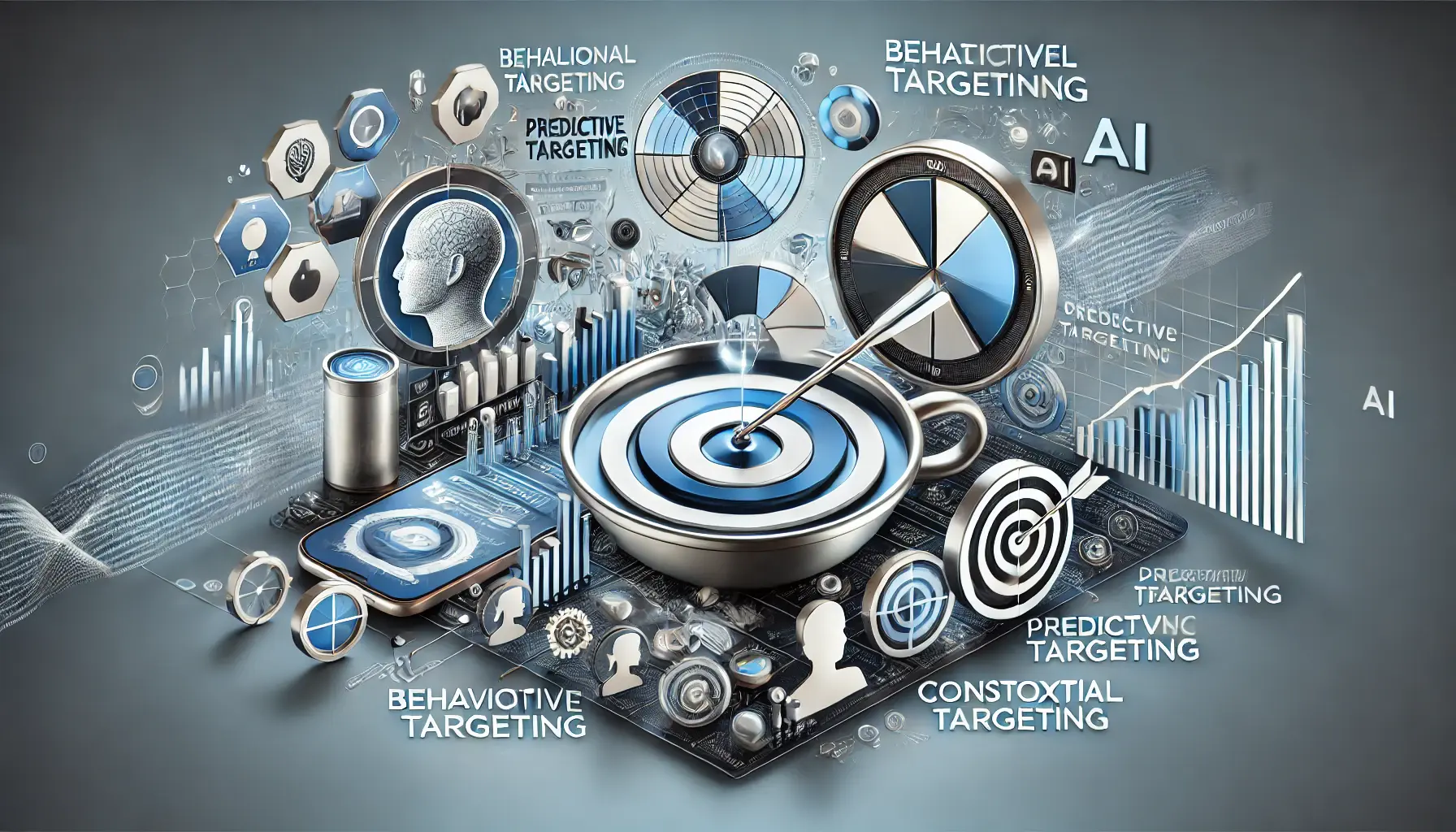
Illustrating the summary of AI-driven targeting techniques, including behavioral, predictive, and contextual targeting.
Summary of AI-Driven Targeting Techniques
This article explored some of the best AI-driven targeting techniques that make display ad campaigns more personalized and relevant:
- Behavioral Targeting: This technique uses user online behavior to serve ads that better align with individual interests and preferences, increasing the likelihood of engagement.
- Contextual Targeting: By placing ads in environments based on webpage content, contextual targeting makes ads feel like a natural part of the user experience. This approach enhances relevance while respecting user privacy by not relying on personal data.
- Predictive Targeting: Predictive targeting forecasts future user actions, allowing advertisers to proactively reach audiences likely to engage, resulting in higher efficiency and conversion rates.
- Dynamic Creative Optimization (DCO): DCO personalizes ad creatives in real-time based on individual user profiles, combining data-driven insights with creative elements to deliver a tailored ad experience that fosters brand loyalty.

Illustrating the importance of AI-driven targeting for relevance, engagement, and improved ROI.
Why AI-Driven Targeting Matters
AI-driven targeting techniques are important in display ads due to the following benefits they bring to overall effectiveness and efficiency:
- Enhanced Personalization: Each of these targeting methods customizes ads to user needs and interests, making ads more relevant and, thus, increasing conversion rates.
- Privacy Compliance: Techniques like contextual targeting respect user privacy by focusing on content context rather than personal data, addressing privacy concerns while maintaining relevance.
- Increased ROI: Targeting the most relevant audience segments ensures efficient allocation of ad budgets, maximizing returns by focusing on users most likely to engage.

Illustrating the process of implementing AI-driven targeting for campaign success in digital advertising.
Implementing AI-Driven Targeting for Campaign Success
For brands looking to integrate AI-driven targeting techniques into their display ad strategies, the following steps can guide implementation and optimization:
- Data Collection: Gather data on user behaviors, demographics, and engagement patterns to inform targeting strategies.
- Select Appropriate Techniques: Choose targeting techniques—behavioral, contextual, predictive, or DCO—that best align with campaign objectives.
- Continuous Optimization: Regularly monitor ad performance, analyzing metrics and user interactions to refine targeting strategies over time.

Illustrating the future of display advertising with innovation and AI-powered technologies.
Embracing the Future of Display Advertising
AI-driven targeting represents more than just a technological trend; it is a movement toward smarter, more adaptive advertising.
Knowledgeable application of these techniques positions brands at the forefront of digital advertising, delivering personalized, relevant experiences for audiences.
As AI continues to evolve, so too will the potential of display ads, making it essential for advertisers to stay informed and open to innovative targeting approaches.
Incorporating AI-driven targeting into display ads not only improves campaign outcomes but also enhances the user experience, building lasting relationships between brands and consumers.
These advanced targeting methods are shaping the future of digital marketing, ensuring that every ad delivered feels meaningful and impactful.
AI-driven targeting ensures campaigns reach the right audience with personalized and relevant ads.

Illustrating frequently asked questions about AI-driven targeting in display ads.
Your campaigns can be managed by an agency specialized in Google Ads, check out our service page.
Frequently Asked Questions About AI-Driven Targeting in Display Ads
Below are some frequently asked questions with answers regarding AI-driven targeting techniques in display advertising.
These responses provide insight into how AI is enhancing ad targeting and user engagement.
AI-driven targeting in ads uses algorithms to analyze data, allowing brands to reach users with ads tailored to their behaviors and preferences, thus increasing engagement and conversion rates.
Behavioral targeting studies users’ online activities and delivers ads aligned with their interests, increasing the likelihood of response and boosting ad relevance.
Predictive targeting uses historical user interactions to detect patterns, enabling advertisers to deliver ads to users who are more likely to engage based on predicted behaviors.
DCO dynamically personalizes ad content by adjusting creative elements to individual user data, creating ads that feel tailored and resonate strongly with users.
AI-powered targeting enhances ad effectiveness by providing better personalization and relevance, ensuring that ad budgets are optimized to reach users most likely to convert.
Yes, AI targeting can improve ROI by focusing ad spend on relevant audiences, who are more likely to interact and convert, maximizing ad impact.
Predictive targeting uses data such as browsing history, purchase behavior, and demographics to forecast future user actions and optimize ad placements accordingly.
DCO customizes ad elements in real time to match each user’s profile, whereas traditional ads are static, making DCO more effective for personalization and engagement.

